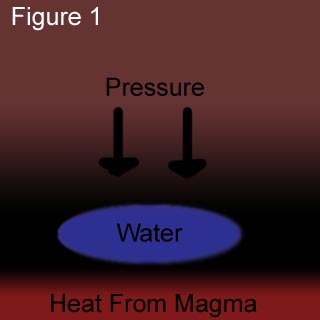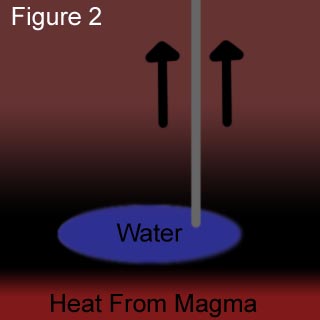Site Navigation
Introduction
What is geothermal energy?
Using Geothermal Energy
Using Geothermal Energy
Geothermal Technologies
Conclusion
Is geothermal energy practical?
References
Bibliography of Sources

WHAT IS GEOTHERMAL ENERGY?
Geothermal energy is, as its name indicates, energy that is produced by the earth. Geothermal energy is emitted by molten rock - magma - under the earth's crust, and radiates through deep solid rock layers. In places of high tectonic activity - near volcanoes, geysers, or hot springs - magma may be relatively close to the earth's surface, and thus able to heat rock layers that are close to the earth's surface.
Groundwater seeps through the hot rock layers, forming pools that are heated by the hot rock. The water becomes superheated, yet is under pressure, and is thus unable to change to steam. (See Figure 1)

Eventually, a hot, pressurized underground body of water is formed. A well may be drilled and placed into the pocket of water, relieving the pressure in the pool and allowing the water to change to steam. The steam will escape up the well, where it can be used to drive turbines and produce electricity. (See Figure 2)

The above method of using geothermal energy has long been the traditional and most common method, yet it may only be used in places where magma lies close to the earth's surface - as in the American West. There are, however, other means of harnessing geothermal energy as a source for commercial or residential heating, cooling, or for generating electrical energy.